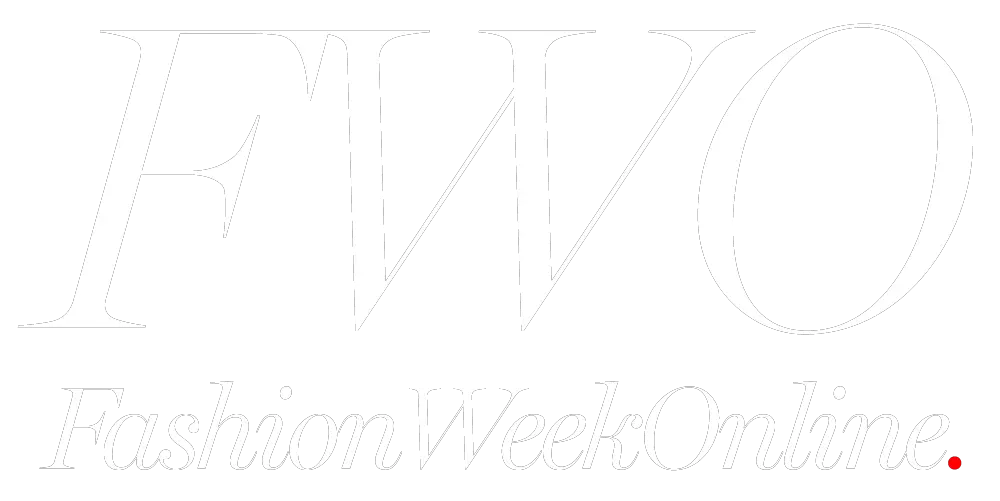Zelei Trace: Designed and Created from the Lotus Flower
Zelei Trace is a one-of-a-kind US-based bespoke luxury brand, designed and created from the lotus flower, which is one of the most unique luxury fabrics available.
Designer Tracie Zelei-Rossi‘s first luxury lotus line was successfully introduced at New York Fashion Week SS20.
Zelei Trace – Real Sustainability
[portfolio_slideshow id=93088 align=center width=699 click=advance thumbnailsize=40 showcaps=false]
Q: How did you come across the lotus fabric and what made you start working with this unique material?
I came across lotus fabric while searching on line for answers about the sex trafficking trade in Cambodia.
I had come across an inspiring article about a woman who had broken free from the sex traffic trade and was rebuilding her life. The strength and resiliency of this woman moved me, and I resonated with her will to rise above such horrific conditions, as I myself was in the process of overcoming my own personal hurdles.
During this search online, I came across the lotus flower, grown abundantly in the same region, and I connected with all that it stands for — rising above the defilements of life, rebirth, purity, wisdom.
This prompted me to visit Cambodia to explore the area, its people, and see the lotus flower up close. While visiting, I discovered the ancient techniques used to develop this unique flower into fabric.
Upon touching the fabric I felt instantly connected and optimized the opportunity to join in the creation of this fabric — that which would be the foundation of my business. I knew in that moment that I wanted to create with it, generate something special as an extension of myself and all that I stand for, and most of all employ the women of this region with good pay and healthy working conditions to help them be self-reliant, rise above the poverty and gain strength and self-esteem through their work.
I wanted to employ the women of this region with good pay and healthy working conditions
Q: Can you explain where and how the product is made? What are the main characteristics of the fabric that makes it stand out from any other eco-friendly ‘sustainable’ fabric?
The lotus fabric is made in Cambodia. It is produced using traditional methods created long ago, by extracting the fiber within the stems, creating a thread, and then weaving the thread into a material.
Each of these steps is completed by hand. All fibers are 100% natural, ecological, and respectful of human health. No sources of pollution and no chemical or toxic substances are used in its production, and only non-carcinogenic dyes and Ecotex certified are used for color.
There are no intermediaries or outside providers, so we are able to ensure the quality of every product, making this stand out from most other materials worldwide.
Lotus fabric is one of the first natural and ecological microfibers in the world, offering superior comfort — light weight, soft to the touch, especially breathable, wrinkle resistant, highly absorbent, and fast drying- the ultimate wearability.
Please visit my website zeleitrace.com for more information and a video on the interesting dynamics of this special fabric.
Q: How do you think brands should respond to the alarming contribution of waste the fashion industry creates?
As we know, the fashion industry creates mountains of non-biodegradable waste, due to the over production of apparel created from man-made materials.
As an industry, it has more recently been the subject of much scrutiny, and is now at the emerging stages of change. This is a huge issue, having to not only change the way in which designers create, but additionally change the mindset of the mass population, from purchasing an abundance of cheaper, lower quality clothing that is from man-made materials, to buying fewer, but better quality clothing made from natural materials.
The benefits of this are two-fold, in that not only does the consumer who chooses to buy eco-friendly materials contribute to the welfare of the earth, but also benefits themselves directly by wearing natural materials that aid their overall well-being through the use of natural fibers against their skin- the body’s largest organ that lives and breathes through our clothes.
In my opinion, it is best to start improvement in the preventative stage — changing what we use in our design creations. By choosing natural fibers, we are not only utilizing the abundant offerings of our planet, but automatically creating a positive end result. Yes there will still be waste, but it will be biodegradable waste that does much less harm in the environment.
By choosing materials that have the least amount of footprint on the earth through their development and construction, we help to minimize pollution on our planet and ourselves. What has already been created with man-made materials, those mountains of fabric garbage, is a reminder of how we live in excess, with little regard for ourselves and the generations to follow.
We are predominantly a throw-away society.
Most recent years have produced a keen awareness of this fact, and many efforts in all trades are being made to reduce our footprint, but what about the fabric mountains? How can we recycle, reuse, recover this product, and make it useful as something else, since it is already on our planet? I believe more attention should be given to the potential uses of this waste- what about for pillow stuffing or home insulation or made into tires? We are an inventive society, and with more research and attention to these potentials, I believe that we can find some solid solutions. Overall, it is through prevention and prescription, that we as a society, and especially us as designers have the ability to make change for the better.
Q: Do you think fashion can really be ‘sustainable’ with all the new design options our consumer society requires from the brands to produce?
I believe fashion can be much more sustainable than it currently is today. There will always be waste, as some products require specific materials for strength, durability and wearability in specific and harsher elements- and these products require man-made materials. However, there are ways that the industry can contribute to reducing waste, and encourage a more positive environmental impact.
At its core, the fashion industry is still operating based on systems that were put into place long ago when there were far fewer designers and much less consumer consumption. It is not unusual for systems to be workable and well managed, only to find that years later they do not work in the same way. In my opinion, this appears to be the crux of the issue of overproduction and the usage of man-made materials in the fashion industry. Fast-fashion labels have risen to the fore, offering racks and racks of similar products, all with multiple color options and an abundance in each size. Production of many new lines each year, each with a high number of designs within each line, has created the situation of overburdened racks, with overlapping designs all made of the same man-made materials. The end result is a ton of wasted product with no where to go at the end of the season, but in the landfill. We as consumers directly influence this production.
Consumers are the ultimate regulators. We do have choices in what we buy. We as the largest population within this cycle, can create change through our choices. Choose pieces that are quality; they may cost more initially, but will be staples in our closet for years to come. Choose apparel that aids in your overall health and well-being, by choosing those with natural fibers that allow your skin to breath and do not irritate. Explore options other than what is optimized and mass produced. Choose to be different. The lotus line provides a good example of an alternative choice- elevating the consumer to one with not only good taste, but as a unique individual that is environmentally intelligent.
Designers have the ability to influence this by voicing their opinions and taking action to do things differently than the current methods. Some have begun to create their own timelines around production, others have emerged as lines that re-purpose used clothing, and some businesses are renting out clothes to optimize the wear of each piece requiring less production. These are great beginnings that positively impact this cycle. More efforts are needed to not over-produce, create the minimum, and manage supply output by making only small sample sets, then produce only what the consumer is requiring.
We as designers also have the ability to create what is seen as ‘beautiful’. Let’s be honest, we are in a society where everything portrayed as beautiful is man-made; pretend, put-on, blown up and out of proportion. Who decided this is what is beautiful? We as designers, and especially those who are well established influencers in the industry, have the power to change what is seen as visually attractive. Natural, organic, healthful, does not equate to homely. The lotus collection speaks to this very issue. It is all natural, organic, and healthful, and yet adheres to the stringent requirements of those who care about showing themselves as classy, sophisticated, and relevant. Each piece of lotus apparel is slightly different in color variation and shows the subtleties of the fibers used within, creating a special unique quality. Why is it that subtle differences and organic imperfections are not honored more than the clone mentality, where we all look the same-same?
With focus and effort by consumers, designers, and the industry as a whole, much progress for greater sustainability is possible. We are at the beginning of a new trend, and together are set to make significant improvement as we streamline our efforts to create a better future for our planet and ourselves.
Q: How do you see the future of the lotus fabric and your own luxury womenswear and menswear line, Zelei Trace?
The first complete women’s and men’s lotus line was created to provide people with the insight to luxury, stylish fashion, created entirely through environmentally conscious means. Its debut in September 2019 New York Fashion Week, showcased the variety of apparel able to be created with this innovative natural fiber – from ready-to-wear shorts, pants, and shirts, to formal suits, and flirty and elegant party wear. We produce accessories such as ties, shawls, and scarves, and are developing home accessories as well.
Zelei Trace emerges at a time when the fashion industry is changing due to rapid awareness of the detrimental effects our age-old practices and new-age fast-fashion are having on the planet. As a forerunner of positive change for the fashion industry, we hope to challenge the fixed views, open the eyes of all who are willing to see, and showcase a new way of producing luxury goods. My heart swells with passion and excitement at being able to be at the forefront of such a powerful movement.
The possibilities are endless!
##
Learn More
With love,
FWO





